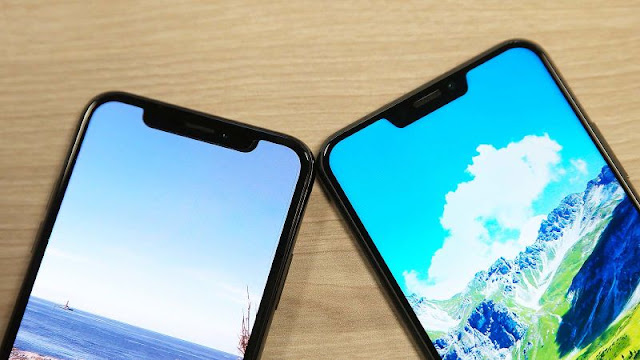The world’s most popular image-based social media network is a great source to significantly boost your business’ revenue, if you know how
The amount engagement that businesses receive on Instagram is unparalleled compared to the other social networks. It’s ten times higher than even Facebook, despite having half of its user base size. So if you don’t have a presence on it, you’re missing out.
However, some businesses flounder in their attempt to reel in an audience. It sends many scrambling for solutions. Some use Instagram automation to get more followers, while others try to do it by themselves. Either way, it can be tough making a splash on the platform.
It’s not a futile endeavour, though. All it takes is some careful planning and the right approach. Below are seven tips for any business looking to pull ahead and find success on Instagram.
1. Develop a clear picture of your audience
Every Instagram marketing campaign should begin with figuring out the demographics that you’re trying to target. This will help give your strategy a stronger focus and structure.
Do some research before doing anything else. Look around Instagram and see what other similar businesses are doing. Take note of the followers that are responding to their posts, and then try to form a profile of the specific type of person you want to attract yourself.
Once you have your audience in mind, you should put in the effort to understand them. Pay attention to the content they enjoy the most, what visual styles resonant with them, and which topics they often discuss. Let all of these elements inform the posts that you make.
2. Establish your identity
Social media is often a stage of competing personalities. The image that you convey is important, as Instagram followers tend to gravitate towards the brands that reflect themselves and their values.
The best place to start with this is your bio. Consider the impression that it makes, as its the first thing that users see at the top of your profile page. Make sure that your profile picture is appealing, and that your bio communicates what your brand is about. Don’t forget to include a link to your website or shop too, as this is the only place where you can have a clickable link.
Your posts are another place where your identity comes through. Put careful thought into the aesthetics of your content, as well as the tone that your captions convey. For instance, the use of emojis can help you seem more playful and lighthearted.
3. Socialize more than you advertise
One of the biggest problems with businesses on Instagram is that some of them become overly self-promotional. They only seem to jump on there to push their products and little else. This is a quick way to push away viewers.
You should always remember that Instagram is a social network. Its main function is to facilitate interactions and foster communities. So it’s often more rewarding to reach out to others and engage, than remain insular and disconnected.
Spend some time just browsing around and viewing other users’ content. Give out likes and comments freely, and follow anybody you think might be interested in your brand. In return, many of them might do the same for you.
Receiving engagement is important. Instagram’s algorithm is built around boosting the content that receives a lot of it. If you ever need assistance, there are a lot of great tools out to help get real Instagram likes fast.
4. Keep your content fresh and high-quality
On Instagram, content will always be king. There’s no question about it. Try as you might in all of the other areas, it’s the primary motivating factor that will bring followers back to your page. People want to see eye-catching photos and videos above all else.
Keeping up with trends is one way to stay relevant with your content. It’s crucial to be constantly evolving and showing your followers something new. You don’t want them to become bored and eventually tune you out.
Variety can spice things up too. Mix up the types of content you post. You could alternate between photos and videos, and then sometimes throw in something unique like a Carousel or Boomerang post. Additionally, ‘regramming’ (resharing) user-generated content could encourage followers to start submitting more content to you.
5. Utilize hashtags efficiently
It’s absolutely imperative that you include hashtags with your posts. Unless you’re already a massive brand with widespread name recognition, people won’t discover your account without them. Instagram’s search function is entirely built around using hashtags.
That doesn’t mean you should stuff your captions with every popular hashtag. That kind of spam-like behaviour will get you ignored more than anything. Instead, your hashtag selection should be specific and relevant to your content.
You should also try using some of the more niche hashtags. They’re a lot less crowded with content, and tend to have more passionate users. Take a moment to look around and see what smaller, specialized hashtags your audience is using to get some inspiration.
6. Try telling an Instagram Story
Much like its predecessor Snapchat, Instagram Stories is a feature-based around temporary posts that only last 24 hours before disappearing. It currently boasts over 300 million monthly active users. It’s also situated at the top of every followers’ timelines, which makes it prime real estate for any business.
Stories are a perfect place to let loose and have fun. You can give viewers a sneak peak behind the scenes of your business, or do fun images with filters, stickers and drawings over the top of them.
7. Provide exclusive value to your followers
Give your viewers some extra incentive to follow your account. Use it as a platform to unveil new products or services before anywhere else. Hold giveaway contests and share limited-time promo codes with them. These kinds of opportunities will make anyone who hasn’t joined your community yet feel like they’re missing out.






















